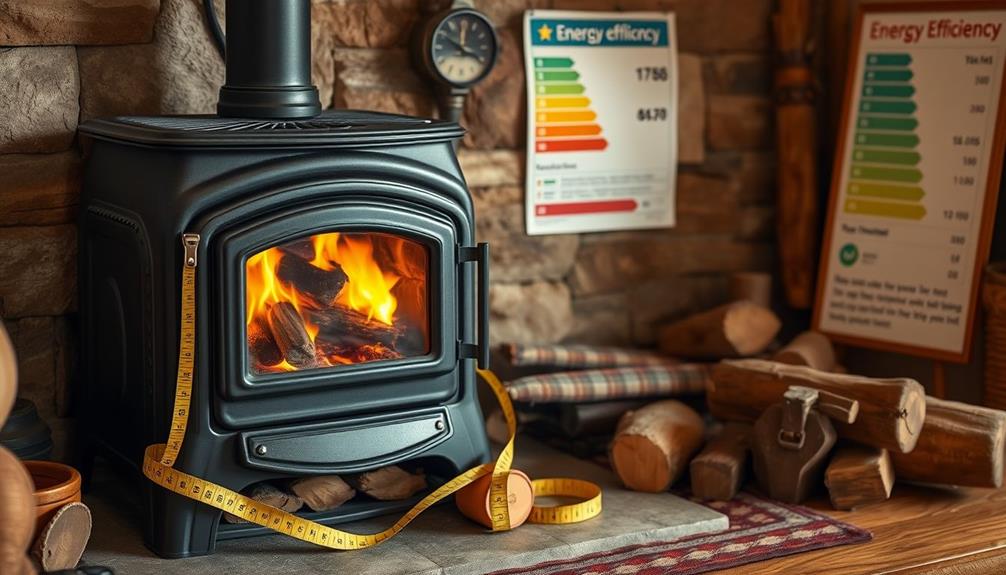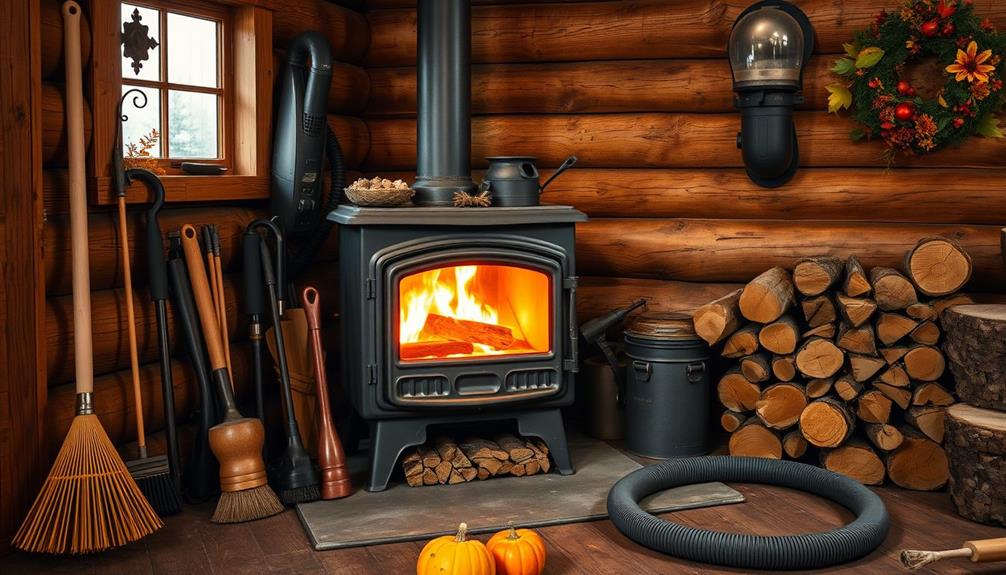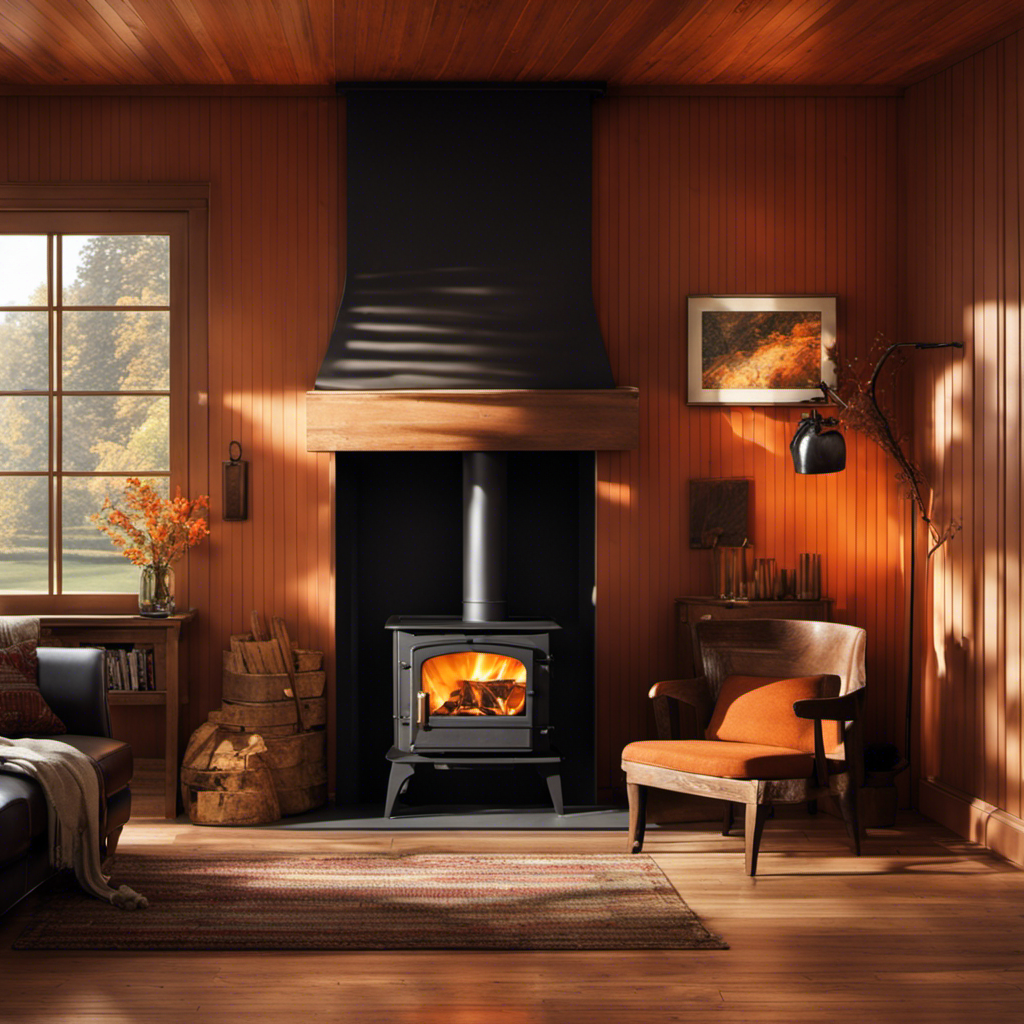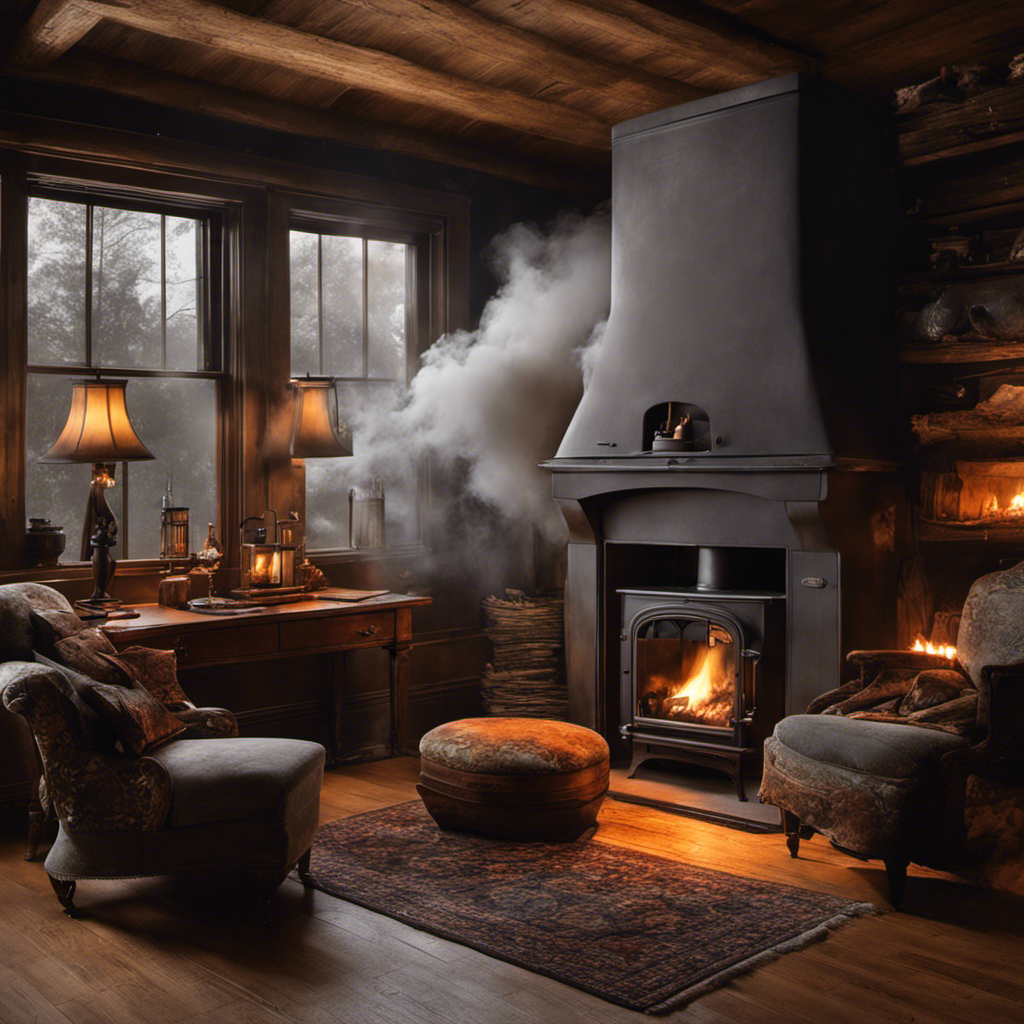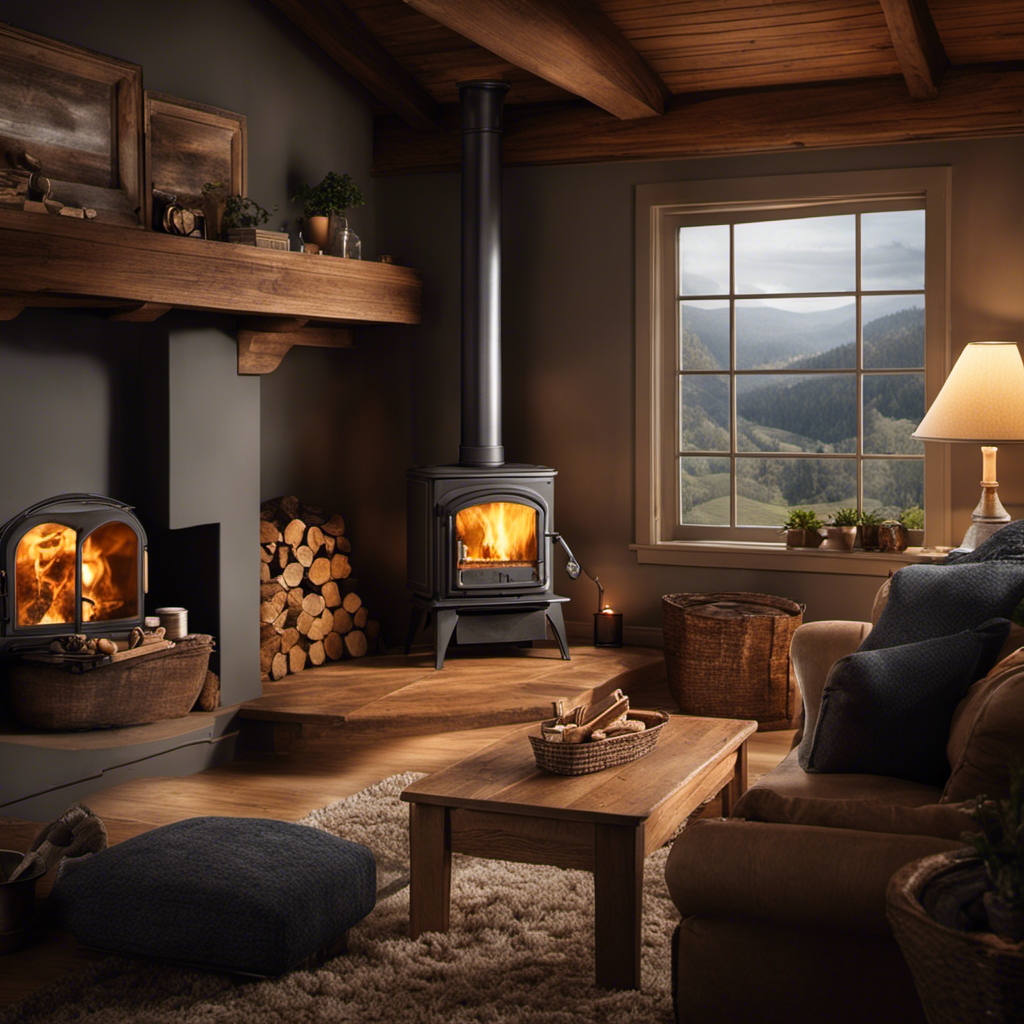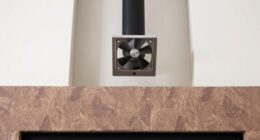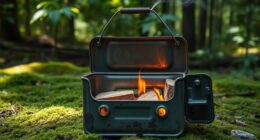Understanding BTUs is essential when choosing the right wood stove for your home. BTUs measure the heat output, and you'll need to calculate your space's requirements based on its size and local climate. For instance, colder areas may require about 30,000-40,000 BTUs for 1,000 square feet. Consider factors like wood type, moisture content, and your home's insulation, as they impact efficiency. Aim for EPA-certified stoves for better performance and lower emissions. By taking these aspects into account, you can guarantee comfort and effectiveness. There's much more to explore in optimizing your heating choice, so keep going!
Key Takeaways
- Determine your heating needs by measuring the square footage and calculating required BTUs, generally about 20 BTUs per square foot.
- Consider your local climate; colder areas may need 30,000-40,000 BTUs for effective heating of 1,000 sq. ft.
- Select an EPA-certified wood stove for better efficiency, aiming for ratings of 75% or higher to reduce fuel costs.
- Choose the right wood type; seasoned hardwoods provide more BTUs compared to softwoods, enhancing stove performance.
- Review maximum, EPA, and average power ratings to ensure the stove meets your heating requirements effectively.
Importance of BTUs in Wood Stoves
When choosing a wood stove, understanding BTUs (British Thermal Units) is crucial for guaranteeing your space is heated effectively. BTUs measure the heat output of wood stoves, helping you determine the right size for your heating needs. For larger areas or colder climates, you might require 30,000-40,000 BTUs to adequately heat a 1,000 sq. ft. space.
For example, the BTU rating of the Englander 10-Cpm generates up to 50,000 BTUs, making it suitable for heating areas up to 2,200 square feet.
Recognizing the differences between maximum power, EPA power, and average power is essential for setting realistic expectations about your stove's heating capacity. Factors like log size, wood density, and moisture content can greatly influence your stove's effective BTU output.
For instance, higher moisture content can reduce combustion efficiency, leading to lower heat output.
Opting for an EPA certified stove guarantees that you're making a sustainable choice, as these models meet stringent emissions standards, typically below 2g per hour. This not only enhances energy efficiency but also contributes to a healthier environment.
Calculating BTUs for Your Space
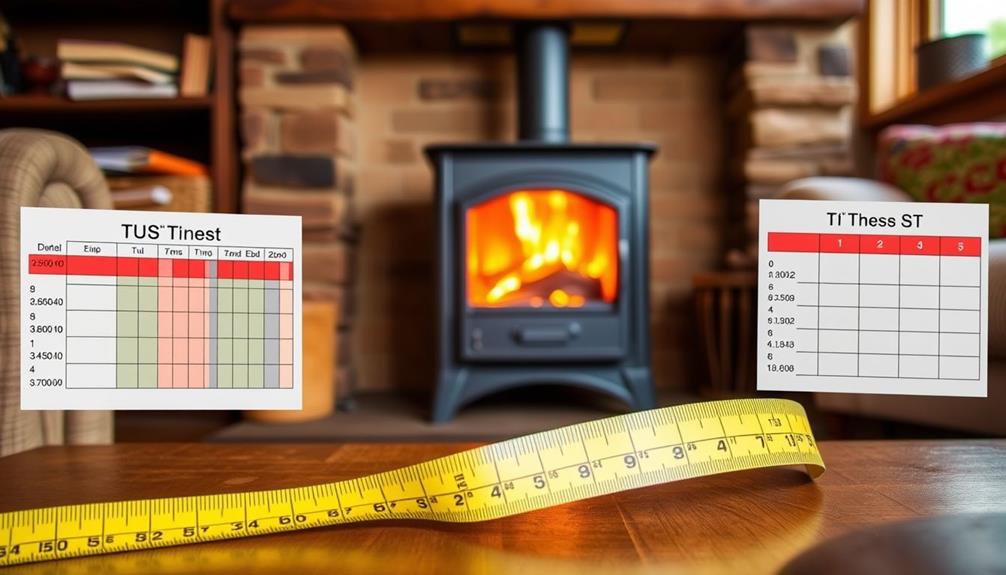
Calculating the right BTUs for your space is essential to confirm comfortable heating throughout your home. Start by measuring the square footage of the area you want to heat. Multiply this by the climate-specific BTU factor; for instance, in colder climate zones, you might need 30,000-40,000 BTUs per 1,000 sq. ft.
Additionally, consider how the overall design of your home, such as an open floor plan or cozy modern farmhouse bedroom, can impact heat distribution. Next, consider your insulation quality. A well-insulated home retains heat better, potentially reducing the BTU range you need.
Don't forget to factor in ceiling height—taller spaces may require additional BTUs to heat the larger volume of air.
Also, assess your home's layout. An open floor plan allows for more even heat distribution, possibly lowering the total BTUs required compared to multi-level or segmented spaces.
To further refine your calculations, consider using online tools like Rescheck. These calculators can help you estimate your heating needs more accurately by taking into account local climate conditions and your home's specific architectural features.
Factors Affecting Heat Output
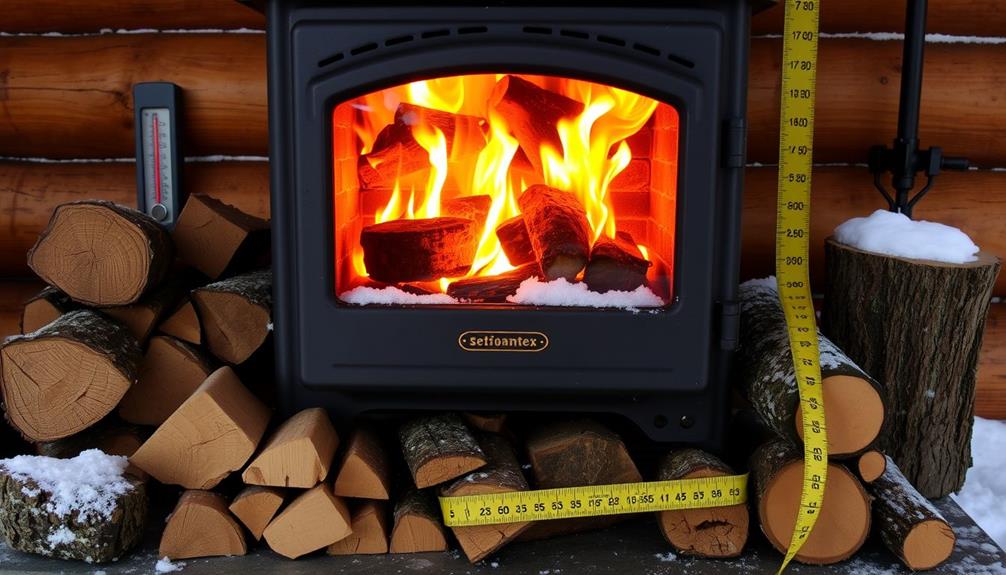
Several factors influence the heat output of your wood stove, and understanding these can help you maximize efficiency. Key elements to evaluate include wood type, moisture content, and external temperature.
Here's a quick overview:
| Factor | Description | Impact on Heat Output |
|---|---|---|
| Wood Type | Hardwoods (e.g., oak, maple) vs. softwoods | Hardwoods yield more BTUs |
| Moisture Content | Seasoned wood should have <20% moisture | Lower moisture increases efficiency |
| Burn Cycle Frequency | Frequency of adding logs during a burn cycle | More frequent refills maintain higher output |
| External Temperature | Colder weather can increase heat loss | Higher BTUs needed to maintain warmth |
Using dense hardwoods can greatly boost your BTUs, while seasoned wood burns more effectively than wetter alternatives. Additionally, how often you refill your stove impacts the heat output; frequent additions can help sustain a steady burn cycle. Finally, keep in mind that colder outdoor temperatures may require you to adjust your wood supply to combat heat loss. By focusing on these factors, you'll enhance your wood stove's performance and guarantee a cozy environment.
Understanding Wood Stove Efficiency
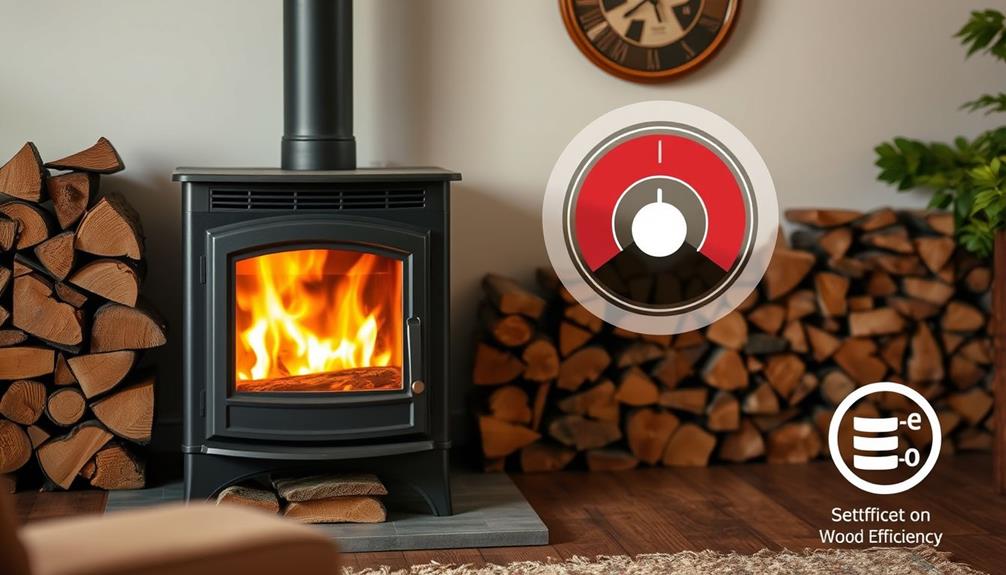
Understanding Wood Stove Efficiency
Efficiency in wood stoves is vital for maximizing heat while minimizing fuel consumption. When you choose an EPA-certified wood stove, you can expect wood stove efficiency ratings of 75% or higher, which greatly outperform older models that might only achieve 48%.
Higher efficiency means you'll get more BTUs from less wood, leading to reduced fuel costs and a lower environmental impact, as these stoves burn about 90% cleaner. Additionally, using devices like air purifiers can help maintain a cleaner indoor environment, especially in homes that use wood stoves for heating.
The efficiency of your stove largely depends on its combustion technology. Non-catalytic stoves are easier to operate but may provide peakier heat output. In contrast, catalytic stoves deliver steadier heat but require more maintenance.
To guarantee peak efficiency, always use seasoned firewood with a moisture content below 20%. Higher moisture levels can lead to incomplete combustion, increasing emissions and wasting fuel.
Proper installation is also essential. If your stove has an efficiency rating over 80%, insulated venting systems help prevent condensation issues, guaranteeing maximum heat output.
Tips for Selecting the Right Model
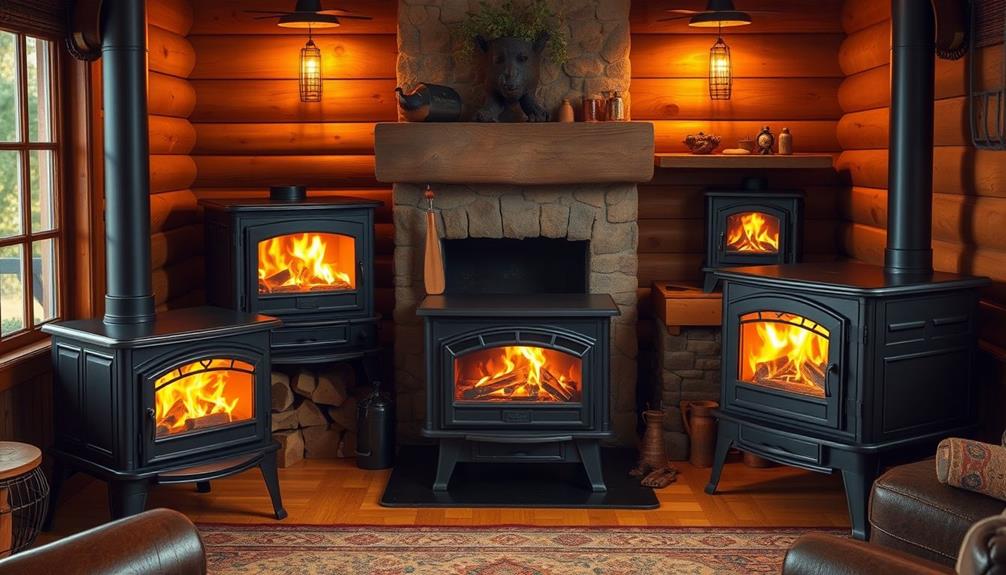
Selecting the right wood stove for your home involves a careful evaluation of your heating needs, taking into account factors like cabin size and local climate.
Start by calculating the BTUs required for your space. A good rule of thumb is to use 20 BTUs per square foot. If you live in a cold weather area, you might need 30,000-40,000 BTUs for a 1,000 sq. ft. cabin, while moderate climates may require less.
Additionally, it's important to verify your stove is placed in a well-ventilated area to optimize performance and safety, as improper ventilation can lead to hazardous conditions. You might also want to reflect on how cats may react to environmental factors when evaluating your stove's placement, especially if you have pets.
Look for EPA-certified stoves with an emission rate below 2g/hour to guarantee you're meeting environmental standards and maximizing efficiency.
Compare the maximum, EPA, and average power ratings from manufacturers to understand the stove's realistic output. In the real world, a stove's actual heating performance often averages one-third or less of its peak BTU rating.
Also, reflect on the size of the stove and the wood species you plan to use, as these factors can greatly affect your heating strategy.
Frequently Asked Questions
How Many BTU Do I Need for a Wood Stove?
To determine how many BTUs you need for a wood stove, calculate your space's square footage and multiply by 20 BTUs per square foot, adjusting based on insulation and climate conditions for accurate heating.
How Do You Calculate Power on a Wood Stove?
To calculate power on a wood stove, measure your space's square footage. Then, multiply that number by the climate-specific BTU factor, adjusting for wood type and conditions to guarantee efficient heating.
What Is a Good BTU for a Fireplace?
So, you want a cozy fire without turning your living room into a sauna? Aim for 30,000 to 40,000 BTUs for a medium room. It's like finding the Goldilocks zone for your fireplace!
What Is the Best Air Flow for a Wood Burning Stove?
The best airflow for your wood-burning stove depends on its design. Start with the primary air intake open, then gradually adjust it. Maintaining flue temperatures between 300°F and 350°F maximizes efficiency and heat output.
Conclusion
In choosing the right wood stove, understanding BTUs is essential for maximizing comfort and efficiency in your space. Did you know that a well-chosen stove can reduce heating costs by up to 50%? By calculating the BTUs needed for your area and considering factors like stove efficiency, you can make an informed decision. Remember, the right model not only keeps you warm but also saves energy and money in the long run.

